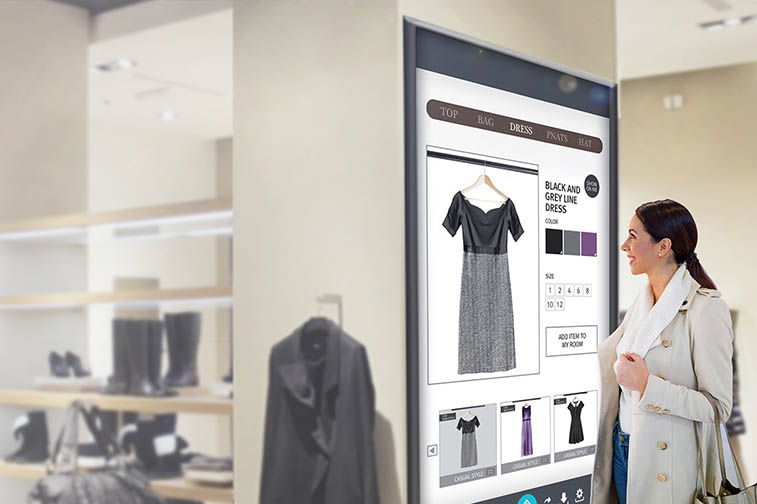When business is good, it’s easier for marketers to “play it safe” and stick to tried and true formulas for “success”. Why take a risk on something new when your tried and true formula has led to past success? There is a certain level of comfort in the strategies of the past, and taking calculated risks can be scary or even met with push-back due to our natural aversion to change. While there is some logic to taking a “low-risk” approach to marketing, in most cases marketers are to change and likely to deal with some level of status quo bias.
We live and work in an environment where changes are occurring more rapidly than at any time in modern history. By sticking to the status quo, marketers are positioning themselves at a disadvantage. Eventually, and in the modern era often sooner than later, what was “tried and true” becomes “dated and ineffective.” Competition for the attention of specific target audiences and demographics is more fierce than ever, and those willing to adapt and learn what works today are more likely to succeed than those who rest on their laurels and stick to a routine without ever thinking critically about optimizing marketing spend.
Digital out of home (DOOH) advertising is one of the rapidly growing marketing channels that enables organizations to compete and win the battle for consumers’ limited attention, but in order to craft an effective DOOH campaign, marketers must understand what differentiates DOOH advertising from other platforms. Further, marketers must be willing to challenge standard practices and take a truthful look at what has delivered a return on investment as well as what new channels and strategies can be tested as well as the theoretical and actual impact new approaches can have on consumers.
In this piece, we’ll explore what marketers are used to when it comes to allocating marketing dollars, why getting too comfortable can be dangerous, how to effectively assess the impact of DOOH advertising, and how to keep yourself & your business honest about whether or not what you’re doing makes sense.
What marketers are used to measuring
Many of today’s marketers find their bread and butter to be in the online space, focused on various digital channels that have worked in the past or they are told are effective. One of the more attractive aspects of online marketing is that it is relatively easy to quantify the impact of a given campaign. Cookies, super cookies, social media “likes”, impressions, clicks, form submissions, goal completions, and a myriad of online marketing tools (e.g. Google Analytics, KISSmetrics, SEM Rush, etc.) make quantifying data simple. Further, it is relatively easy to assume one online “view” is made by one person (bots notwithstanding). This enables advanced reporting, programmatic advertising, and targeted messaging, all things marketers love, and for good reason.
While we agree that an online presence is vital to any effective marketing strategy, it’s also easy to get tunnel vision and hone in on a given set of metrics as opposed to taking a step back and looking at the bigger picture.
Additionally, not only can this tunnel vision lead to marketers getting too caught up in page ranks and not focused enough on conversions and true ROI, it can lead to them overlooking other ways to truly connect with consumers. Social media, banner ads, and SEO are great, but limiting the range of the advertising methods you use can lead to missed opportunities to connect with consumers, and that opportunity cost can often go overlooked when considering marketing ROI.
Focusing on what matters & thinking outside the box to maximize impact
When we look past specific metrics and reports and drill down to what is important, what matters in marketing is triggering a strong response from your target audience. Unfortunately, social media likes, page views, and many other online metrics are only correlated with impact, not direct indicators of it. Further, they say nothing of the aforementioned opportunity cost of not exploring other mediums and exploiting the opportunities available outside of webpages and mobile apps.
To truly differentiate a brand, marketers need to focus on delivering contextually relevant, attention-grabbing information that consumers value. DOOH advertising provides a unique, high-impact medium to do just that.
To conceptualize the impact of DOOH, consider the Women’s Aid DOOH campaign that was viewed by 327 million people & won a Masters of Marketing award. Women’s Aid recognized that traditional approaches to preventing domestic abuse have been lacking, as they focused mostly on the victim and abuser. The non-profit recognized that our digitally connected society provided a new opportunity to address the problem. To this end, they used digital displays and facial recognition technology to display bruised faces of domestic abuse victims that began to heal as more people stopped and looked. They were able to use push notifications and geo-tracking technology to integrate mobile devices into the ad campaign, prompting users to look at the digital billboards. Women’s Aid thought outside the box and dared to be different. The result was a broad-reaching, highly impactful campaign that lead to emotional responses in a way online ads wouldn’t have been able to achieve.
How DOOH can be a game changer
The Women’s Aid example is an excellent microcosm for the benefits of DOOH, and it is essential to understand that DOOH is a useful marketing tool across verticals that make an impact where it really matters. By adding DOOH to their campaigns, marketers can:
• Deliver contextually relevant content - Thanks to smart cameras, artificial intelligence (A.I.), content management systems & analytics platforms, geo-location data, network-connected digital signage, and other DOOH technology, marketers can deliver content that is targeted to specific demographics and that can be dynamically updated to consistently deliver content relevant to their target audience.
• Create interactive & immersive experiences - DOOH allows audiences to interact with content by way of touch screens, augmented reality (AR), and virtual reality (VR). This adds an additional layer to DOOH and makes it more engaging and attractive to consumers.
• Increase conversions & touchpoints - Not only do QR codes, hashtags, geo-location technology, and interactive displays make integrating DOOH with mobile and social media campaigns a breeze, they also have a significant impact on purchasing decisions. As mentioned in this Medium post, 70% of adults that saw digital signage within the month before an unplanned purchase made their choice as a result of the signage. Given that influencing purchasing decisions is a primary marketing objective, this has huge implications.
• Enable higher recall of ads - According to the same post, digital signage has a 27% higher recall rate than online videos. Going back to the topic of what really matters, while it is important to track the views of an ad, it is far more important that the message resonates with the viewer. DOOH allows marketers to increase the probability people pay attention to their message.
Further, DOOH can allow for the same automation, scalability, and detailed reporting marketers love in online advertising. For example, our DOOH platform enables detailed insights to measure real-world metrics that truly reflect the impact of a given ad campaign such as: dwell time, video analytics, proof of play, demographic information, and more. In short, just because traditional online metrics do not apply to DOOH in an “apples to apples” way, that doesn’t mean marketers should avoid them, it means marketers should reevaluate how they measure ROI on their marketing spend.
Keeping yourself honest
Whatever your current approach to marketing and evaluating ROI is, if you are in the advertising industry it is essential to take a step back and consider the untapped opportunities that could increase ROI on marketing spend. This can be difficult to do because it requires asking tough questions and challenging the status quo. However, going down this path at least once a year is vital to long-term success and staying ahead of the curve. Questions to ask to ensure your business is doing all it can to optimize marketing operations include:
• Are our current platforms and partners delivering optimum value?
• What new trends have emerged that could benefit our organization?
• How can we exploit new technologies to maximize our advertising investment?
As we have seen with the myriad of opportunities exploited by users of our own DOOH platform and the advancements in proof of play in the DOOH industry, a lot can change in a short period of time if you are willing to ask the tough questions, give truthful answers, and try something new.
Contact us to learn more
If you would like to learn more about how DOOH can revolutionize your marketing campaigns, contact us today. Our team of experienced industry experts and position as a market leader in the digital experience and mobile device space uniquely position us to help you get the most out of your advertising investments.

John Bertoli currently serves as Head of Marketing & Partner Services at Samsung SDS America where he is responsible for brand awareness and driving demand through outbound campaigns and optimizing inbound marketing channels to generate meaningful opportunities for the various business units and solutions, namely retail technology, digital out of home (DOOH), HPC Managed Services, blockchain, and retail analytics software.
- 3 steps to optimizing the car dealership showroom experience
- How to enhance modern dealership operations: Inventory, staffing, and showroom management
- Reducing costs with affordable and resourceful mPOS
- Improving the user experience with mPOS
- Mobile point-of-sale systems: How they streamline the user experience & maximize ROI
- Making inroads into QSR digital transformation
